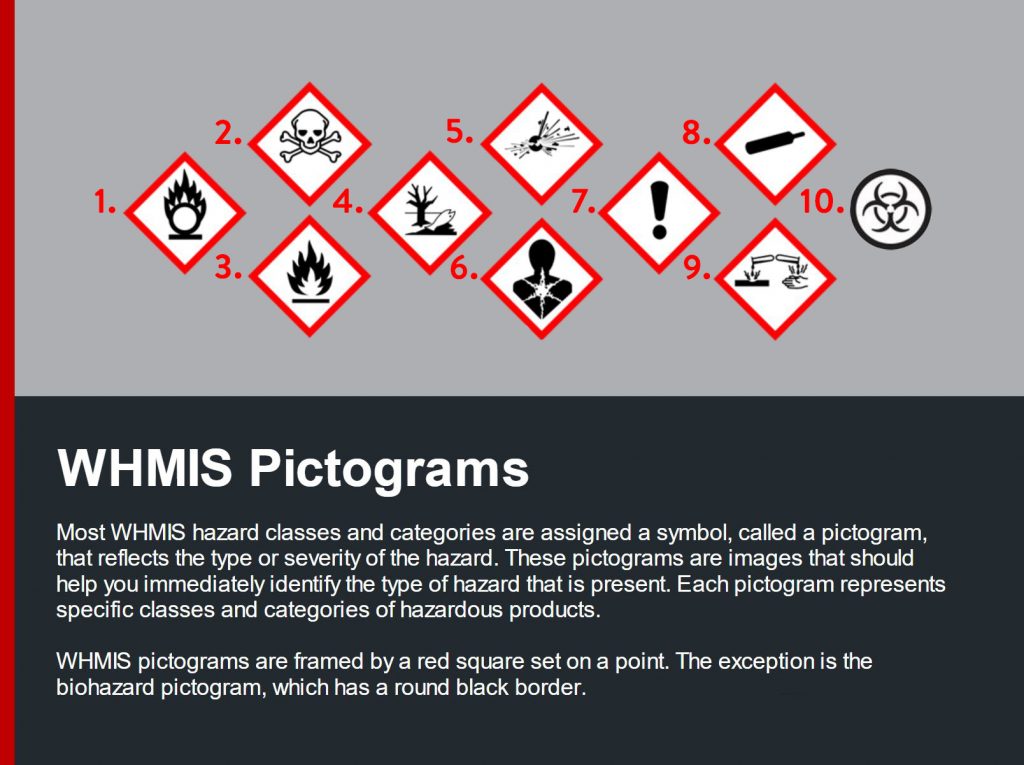There are 10 pictograms to know when dealing with WHMIS 2015

- Flame Over Circle
Oxidizing materials that cause fire to increase in intensity. - Skull and Crossbones
These products can cause death or toxicity even with a short exposure to small amounts - Flame
The flame pictogram is used to describe and show flammable gases, liquids, and solids. As well as some self reacting substances and organic peroxides. - Environmental
Long term aquatic environmental hazards and damage are caused by items with this pictogram displayed on it. - Exploding Bomb
Self reacting substances that are prone to exploding, and some types of organic peroxides are covered under the exploding bomb pictogram. - Health Hazard
Health hazards are classified by respiratory or skin sensitivity, carcinogenicity, aspiration hazards, and germ cell mutagenicity. - Exclamation Mark
This pictogram is displayed on products that may cause damage to the ozone layer, and products that cause less serious health effects that products in other categories or classes. - Gas Cylinder
Chemicals or products that are stored under great pressure in gas cylinders must display this pictogram. - Corrosive Material
The corrosion pictogram is used for products that can cause corrosive damage to metals, skin, or eyes. - Biohazard
Products consisting of organisms and toxins that can cause disease in people or animals are required to have a biohazard symbol on their packaging or containers.
There are some classes and categories that may require more than one pictogram or specific combinations of two or more. These can be products that cause more and less severe health hazards, or chemicals stored in gas cylinders that can also cause a fire to increase in intensity.
For more information on WHMIS 2015 click here
For Personal Protective Equipment click here
To become certified in WHMIS 2015 click here
